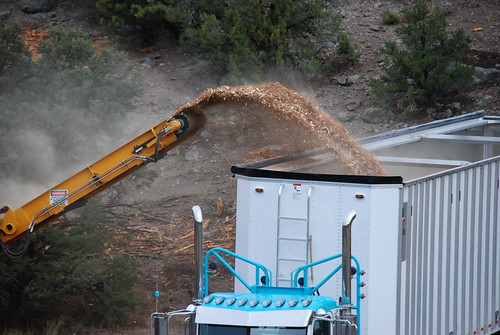The USDA Forest Service Woody Biomass Utilization Team promotes and guides the removal of woody biomass from national forests. Removal of woody biomass from forests provides a variety of critical benefits for rural economies from wood to energy projects to overall ecosystem health. Woody biomass is used in bioenergy facilities that use commercially proven technologies to produce thermal, electrical or liquid/gaseous bioenergy.
Because climate change is having profound and significant impacts on the nation’s forests and rangelands, demands for renewable energy and bio-based biofuels products is increasing exponentially. Forests also play an important role in sequestering carbon, thereby reducing the buildup of greenhouse gases in the atmosphere.

The U.S. Forest Service removes tons of biomass each year in hazardous fuels reduction and forest health projects, leaving behind forests that are healthier and more resistant to the adverse affects of wildfire, insect attack, disease and severe weather.
Woody biomass removed from forests can be used as biofuel for energy, especially in rural communities near forests. Since woody biomass removal can help restore forests to resilient conditions, there are many benefits associated with it including:
- Economic benefits and job creation in rural communities.
- Reduced dependence on fossil fuels.
- Reduced greenhouse gas emissions helping to mitigate the effects of climate change.
- Improved drinking water from healthier forest watersheds.
- Hazardous fuel reduction helping to reduce the affects of catastrophic wildfires.
- Wildlife habitat improvement.
